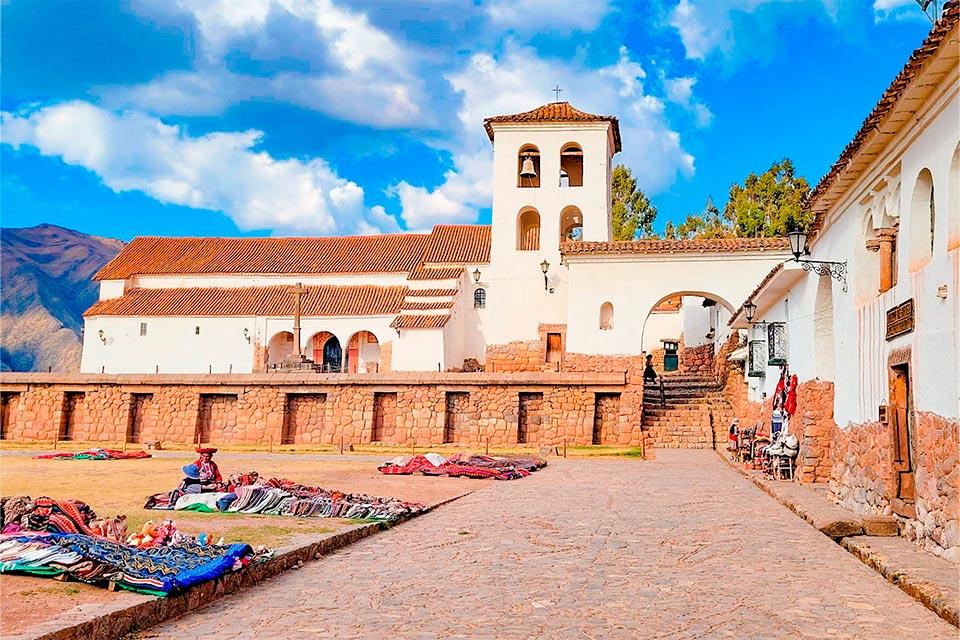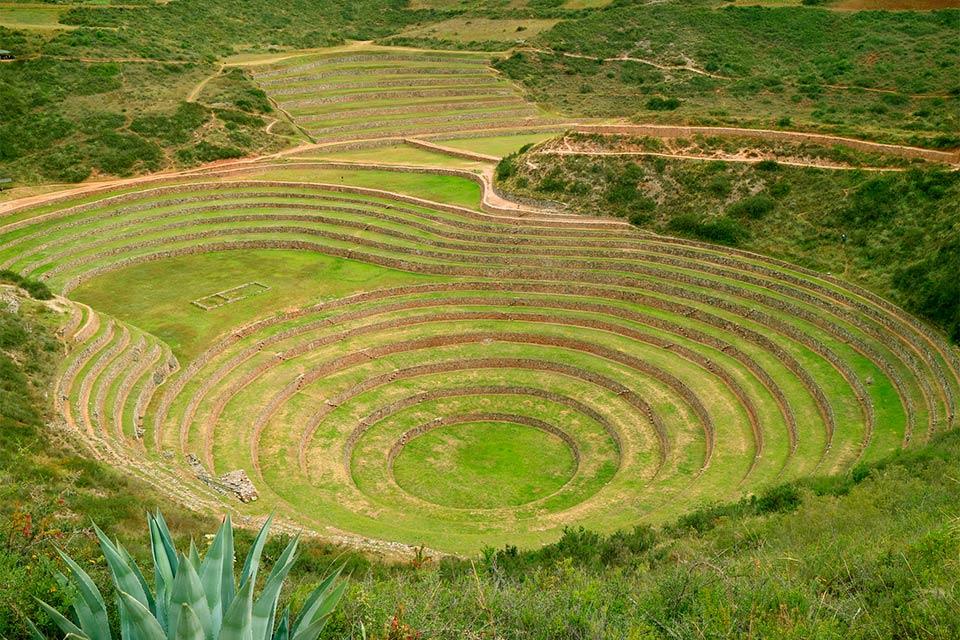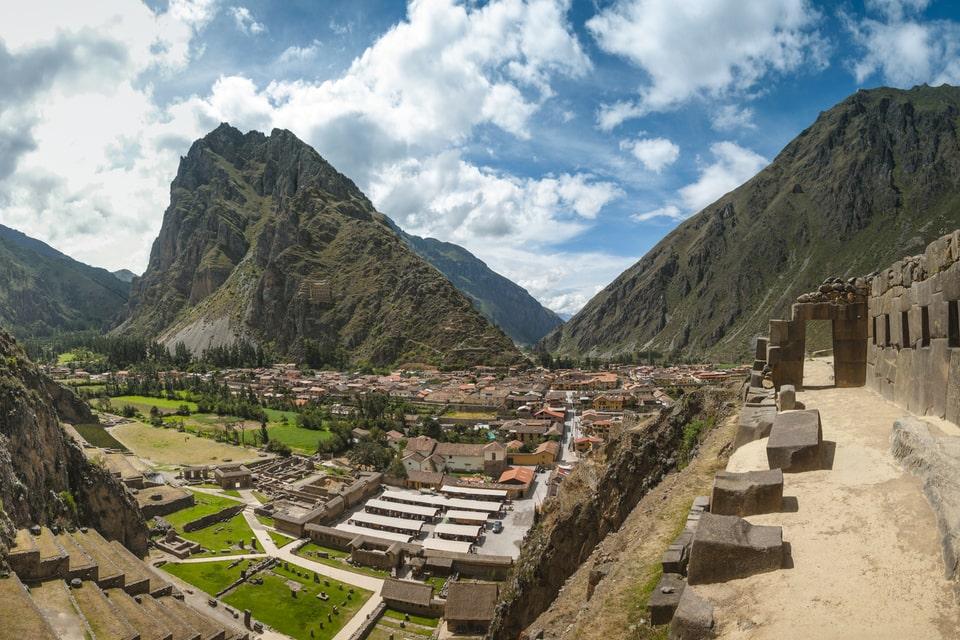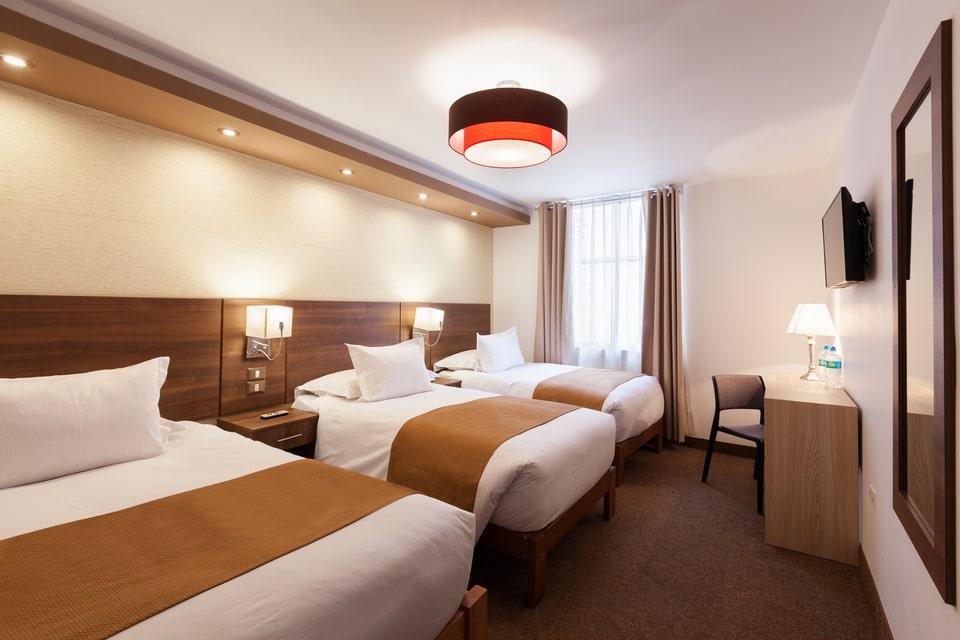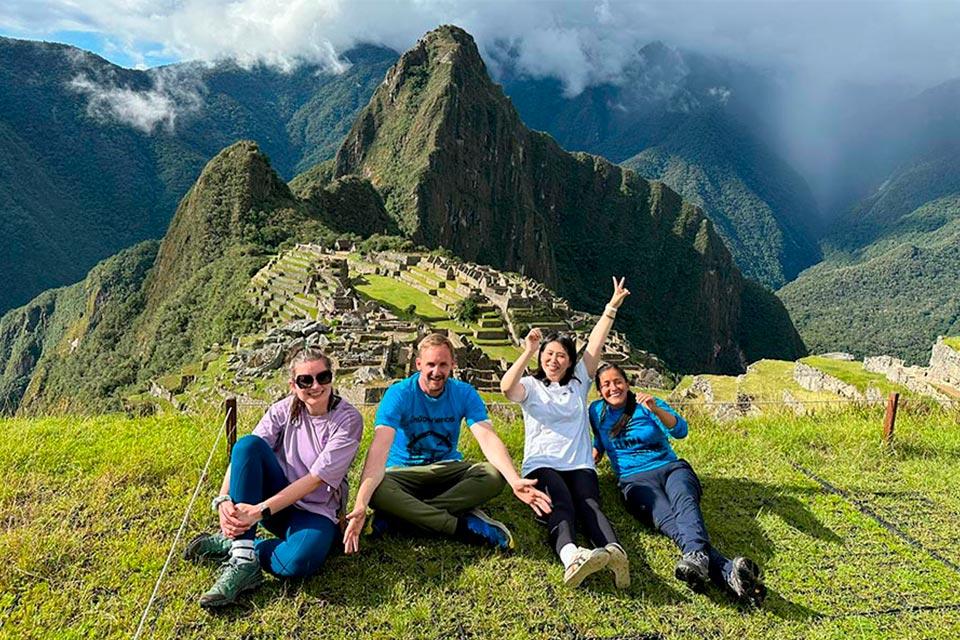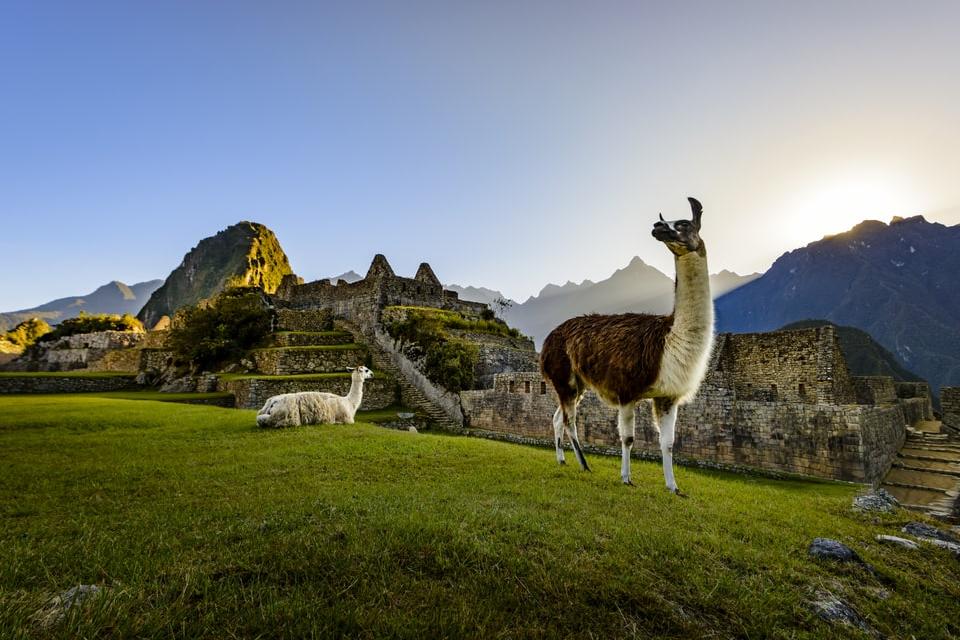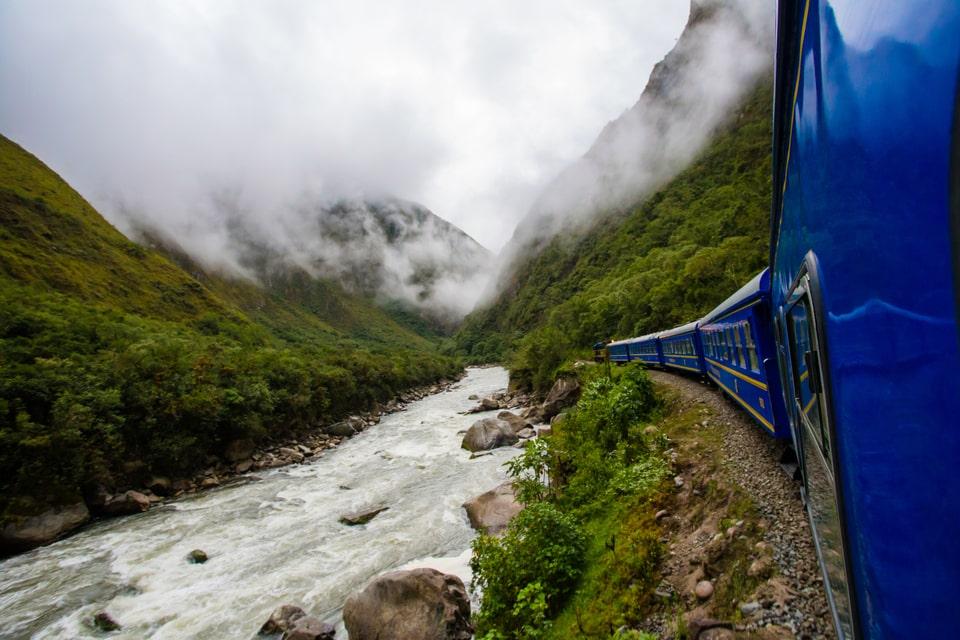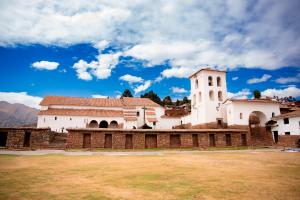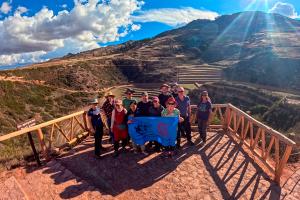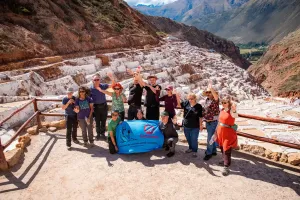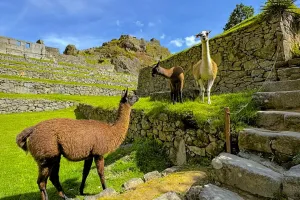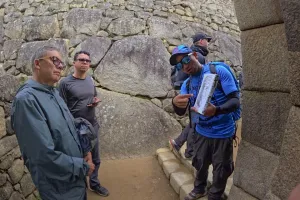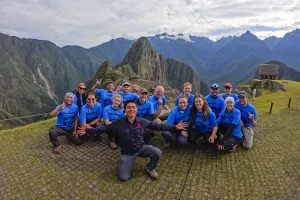Embark on a fantastic Inca journey with the Maras Moray Machu Picchu 2-day tour. Discover the famous Market of Chinchero and its textile centers, where you will learn the ancient Inca dyeing and weaving techniques from local women. Then, visit ancient circular agricultural terraces of Moray, Inca Salineras of Maras, and the Living Inca village of Ollantaytambo, before getting to the enigmatic Machu Picchu.
This tour combines breathtaking landscapes, rich history, and unique cultural immersion. From exploring traditional markets to witnessing the sunrise over Machu Picchu, every moment is designed to awe. With expert guides, experience the essence of the Upper Sacred Valley and the mystery of the Incas.
Maras, Moray Machu Picchu Tour 2 Days
Explore some of Peru's most fascinating Inca ruins and cultural sites and experience the breathtaking beauty of a lost Inca citadel, one of the 7 wonders of the modern world. Our experience of Maras, Moray, Machu Picchu, for 2 days, usually includes Inca jewelry, like the colonial town of Chinchero, with its Inca ruins, main square, textile centers, its colonial church, and its important collection of "Cusco School" paintings.
Ollantaytambo is another attraction included in this program. The Ollantaytambo fortress was the last Inca stronghold in their retreat into the jungle from the Spanish. The village, at the foot of the fortress, is currently inhabited by Peruvians who preserve the infrastructure and houses built by the Incas.
And the next day, Machu Picchu will wait for you! It is the most famous of all the Inca sites. The "Lost City of the Incas" is situated high in the Andes Mountains and can only be reached by train or on foot through the famous Inca Trail, or even through the Salkantay trek of 4 days.
Tour Highlights:
- Chinchero: Colonial town, famous for its colonial church and textile workshops.
- Moray: Circular Inca agricultural terraces that go deep into the earth.
- Maras: Inca salt mines exploited by current inhabitants.
- Ollantaytambo: Inca fortress and living Inca village
- Machu Picchu: Inca Wonder, one of the 7 wonders of the modern world.
Maras Moray Machu Picchu at a Glance:
Day 1: Cusco – Chinchero – Moray – Salineras – Ollantaytambo – Aguas Calientes
Pick up from your hotel in Cusco around 8 am and drive to Chinchero to explore its traditional textiles and Inca ruins. Then, we are going to visit Moray's archaeological site, a unique Inca site of circular agricultural terraces that go into the earth, and where the Incas experimented with sowing different types of seeds. After, explore the town of Maras, which is known for its colonial architecture and its salt pans that have been in use since the Inca times.
After a deserved lunch, visit the town of Ollantaytambo with its amazing Inca fortress and living Inca town. Finally, we'll take a tourist train to Aguas Calientes, the town located at the base of Machu Picchu. Upon arrival, check into our hotel and spend the evening exploring the town.
Day 2: Explore Machu Picchu – Return to Cusco
On the last and most important day, we will start early with an energetic breakfast at the hotel and then take the first buses to Machu Picchu. Once you enter the Inca citadel, you will begin a guided tour of the most important places in the sanctuary (Intipunku, temples, palaces, squares). The tour lasts around 2.5 hours; then, we will have time for some last photos.
At the end of the tour, we will board a bus back to Aguas Calientes. There, we will take the Expedition train back to Cusco. Arrival is around 7:30 pm back at your hotel.
Included:
- Pick up from your hotel in Cusco
- Door-to-door complete service (hotel to hotel)
- All transportation included
- Entrance tickets to Machu Picchu (Circuit to be determined)
- Buffet lunch and dinner on day 1
- 1 night in a 3-star hotel in Aguas Calientes
- Bus up and down to Machu Picchu
- Professional Tour Guide
- Round-trip Expedition train
Not Included:
- Entrances to other attractions not mentioned
- Meals not mentioned
- Travel Insurance
- Tips (optional)
Optional hikes after the Machu Picchu tour:
- Huayna Picchu Mountain – Additional US$ 68 per person (2 hours round trip).
- Machu Picchu Montaña – Additional US$ 68 per person. (3 hours round trip).
You can only hike one of these mountains, and it is done after the guided tour in Machu Picchu. Advance booking is required for both hikes.
Why book with TreXperience?
- Local Expert: Get the best prices and best service with a 100% Peruvian company
- Expert Tour Guides: Our tour guides are professionals and fluent in English
- Exclusive Hotels: We work with top-rated 3-star hotels in Aguas Calientes (Machu Picchu Pueblo)
- Panoramic Trains: We are the only company that includes Panoramic trains Vistadome
- Want more? We also offer the Maras Moray & Chinchero Half-Day Tour.
Additional info:
- This is a door-to-door service. We start at your hotel and take you back to your hotel.
- Tickets to Machu Picchu and the circuit to be visited will depend on the availability of the day.
- Vegetarian meals are available during lunch on day 1.
- By booking this tour, you support social projects that help education in rural villages.
- There is a surcharge of US$40 for a private single room.
Full Itinerary of Maras Moray Machu Picchu Tour
Day 1: Cusco – Chinchero – Moray – Salineras – Ollantaytambo – Aguas Calientes
At 8:00 am, you will be picked up from your hotel in Cusco and driven to Chinchero, about 28 km (17 miles) from Cusco. Upon arrival, you will visit its archaeological site, including an Inca palace's remains, a ceremonial center, and several agricultural terraces. Next, you will visit the colonial church of Chinchero, which was built on the foundations of another Inca temple. The church has beautiful colonial-era paintings belonging to the renowned local artistic movement known as the “Cusco School” and decorations and a baroque altar made of gold leaf.
After the church, you will have some free time to explore the town and visit the handicraft market. Chinchero is known for its textiles, and you will find a variety of handmade garments, blankets, rugs, and other woven goods made by local weavers. You can also learn the artisans' traditional dyeing and weaving techniques that date back to the Inca era in local textile workshops. After visiting Chinchero, you will continue to Moray and explore the circular agricultural terraces arranged in concentric circles and descending into the ground. The Incas used terraces for experimental farming, each level created a different microclimate, allowing the Incas to grow a diiferent seeds in each terrace level (microclimate) to obtain different type of harvest of a same product. Amazin!
Next, you will continue to Maras to explore the village and the Salineras of Maras, a series of salt mines on the side of a mountain. The salt mines have been in use since pre-Inca times and are still operated by local families today. Your guide will explain the salt extraction process and the cultural significance of the mines for the local community. Lunch will be served in a local restaurant in Urubamba, where you can taste some of the local dishes, such as ceviche, lomo saltado, or rocoto relleno, as well as some vegetarian and vegan options. The restaurant also offers a variety of beverages, including pisco sours, chicha morada, or mate de coca.
After lunch, you will continue your journey to Ollantaytambo, where you will visit its Inca fortress, where is located many temples, and several residential areas. Your guide will explain the history and significance of the site, as well as the strategic importance of its location in the valley. You will have some free time to explore the ruins on your own, take photos, or climb to the top of the fortress for panoramic views of the town and surrounding mountains.
You will also have a walking tour of the town of Ollantaytambo, where you will see the traditional Inca and colonial architecture. Your guide will explain the cultural and economic importance of the town, as well as its connection to the surrounding communities. After the tour, you will take a train from Ollantaytambo to Aguas Calientes, the town at the base of Machu Picchu. You will spend the night in a hotel in Aguas Calientes.
- Transportation included
- Entry fees included
- Tour Guide
- Buffet Luch in Urubamba
- Dinner in a local restaurant in Ollantaytambo
- 3-star hotel
Day 2: Explore Machu Picchu – Return Cusco
After breakfast in your hotel, you will board the first bus CONSETTUR heading to Machu Picchu´s entrance. These buses frequently run from early morning until late afternoon. It's recommended to arrive early to the entrance of Machu Picchu archaeological park to beat the crowds and to have plenty of time to explore the site.
Once inside Machu Picchu, you will begin a 2 to 3-hour guided tour, where visitors are given a brief introduction to the site and its history from our tour guide. From there, the guide will take visitors through the various sections of the citadel, pointing out important features, structures, and landmarks. Some of the highlights of Machu Picchu are the viewpoints, the Temple of the Sun, the Intihuatana Stone, the Temple of the Three Windows, and the Temple of the Condor. The guide will also explain the significance of the various agricultural terraces and water channels that the Incas used to sustain life in this rugged mountain environment.
You will also have free time in Machu Picchu to take photos or participate in optional hikes: you can hike up to Huayna Picchu or Machu Picchu Mountain, both offering stunning views of the citadel and the surrounding landscape. These hikes require a separate ticket and must be booked in advance, as they have limited daily entry.
After exploring Machu Picchu, take the bus back to Aguas Calientes for lunch on your own and board the Expedition train back to Ollantaytambo. There, a private van back to Cusco. You will arrive to your hotel in Cusco around 7:30 pm.
- Transportation included
- Entry fees included
- Tour Guide
- Breakfast at hotel
- Expedition train & bus to return to Cusco
Price for Maras Moray Machu Picchu Tour
Price per person:
- US$ 440 - Adults
- US$ 420 - Children and students
Booking and payment
- To book the Maras Moray and Machu Picchu Tour, you need to make an initial payment of US$ 200 per person; the remaining balance can be paid online or at our office in Cusco with any credit card.
Student Discount:
- US$ 30 off per person
All travelers under 17 have a $30 discount. If you are 25 years old or under when traveling, you can get the discount with your University ID. To get the discount, the ID must include:
- Student name, photo, and university name.
- Have a valid expiration date (expired IDs will not be accepted).
- ISIC cards are not valid.
Please email us at info@trexperienceperu.com to receive your discount code.
Maras Moray and Machu Picchu tour packing list
If you plan on taking a tour of Maras Moray and Machu Picchu, you'll want to ensure you bring the right gear and clothing to stay comfortable and safe throughout your trip.
Let´s remember that the Sacred Valley is between 6,725 and 9,842 feet and has a temperate climate with temperatures ranging from 70 to 74 degrees Fahrenheit during the day and nighttime temperatures ranging from 40 to 47 degrees.
On the other hand, Machu Picchu is in the rainforest brow and its climate is warmest with high humidity level. For all these reasons, here are some packing essentials you might want to consider:
Essentials
- Original passport
- Daypack: You'll want to bring a small daypack to carry your water, snacks, camera, and other essentials during your hikes and tours.
- Water bottle: Staying hydrated is crucial at high altitudes, so bring a refillable water bottle that you can fill up throughout the day.
- Cash: You'll want to have cash and/or a credit card on hand for souvenirs, snacks, and other expenses during your trip.
- Camera or smartphone: You'll want to capture stunning landscapes and historical sites, so don't forget to bring a camera or smartphone with plenty of storage space.
- Personal medication: If you have any personal medication, make sure you bring it with you and keep it easily accessible during your trip.
Clothing and gear
- Comfortable walking shoes: You'll be doing a lot of walking and hiking, so it's important to wear sturdy, comfortable shoes that provide good support.
- Trekking pants: Quick-drying, lightweight, and UV-protective.
- Shorts: Made from lightweight fabric for the hottest days
- T-Shirt: thin and breathable
- Long-sleeved fleece shirt: To keep warm
- Thermal jackets: For nights and early mornings.
- Rain gear: Machu Picchu and the surrounding areas can be prone to sudden rain showers, so be sure to pack a waterproof jacket and/or poncho.
Accessories and extras
- Sunscreen and sunglasses: The sun can be intense at high altitudes, so make sure you pack plenty of sunscreen and sunglasses to protect your skin and eyes.
- Insect repellent: Mosquitoes and other insects can be present in certain areas, so bring insect repellent to keep them at bay.
Maras Moray Machu Picchu - Travel info
Before booking a tour to Maras Moray Machu Picchu, it’s essential to consider a few key factors to make the most of your experience. Altitude can be challenging for some visitors, so acclimatizing in Cusco beforehand is highly recommended. Weather is another important point; the dry season offers clearer views, while the rainy season brings lush landscapes but muddy paths.
Also, understanding the cultural and historical significance of Maras and Moray enhances your visit, especially when combined with the awe-inspiring beauty of Machu Picchu. Choose a reliable tour operator, check what's included (like train tickets and entrance fees), and ensure the itinerary matches your interests and fitness level. With a little planning, this journey becomes unforgettable.
Location
The Sacred Valley of the Incas is located in the Cusco region of Peru, specifically in the province of Urubamba. It stretches along the Vilcanota River (also called Urubamba) between the towns of Pisac and Ollantaytambo, passing through Maras, Moray, Chinchero, and Ollantaytambo. It is located about 15 kilometers northeast of the city of Cusco and can be easily accessed from there by car (1 hour drive).
On the other hand, the Inca city of Machu Picchu is located in the district of the same name, in the province of Urubamba, in the department of Cusco, in southern Peru (South America). It is 132 kilometers northwest of Cusco. The only way to reach Aguas Calientes, the town located at the foot of the attraction, is by train or by hiking the Inca Trail.
Altitude
The Sacred Valley of the Incas is located between 6,725 and 9,842 feet, in a warm high Andean valley. Machu Picchu is at 7,973 feet, on the edge of the Peruvian jungle with high humidity.
Weather
The Sacred Valley has a temperate climate with daytime temperatures ranging from 70 to 74 degrees Fahrenheit and nighttime temperatures ranging from 40 to 47 degrees Fahrenheit.
The dry season (May to September) is characterized by sunny days and cool nights, with average daytime temperatures of 68°F and nighttime temperatures that can drop to 36°F. Rainfall is more frequent during the rainy season (October to April), especially in the afternoons, although it can occur at any time.
Machu Picchu, being in a subtropical zone, has an average annual temperature of 63°F, with variations between 47°F and 72°F.
The seasons are similar to the Sacred Valley, with a dry season and a rainy season. Rainfall is more frequent during the rainy season (December to March), with maximum temperatures of 70°F and minimum temperatures of 43°F.
Best time to visit
The best time to visit the Sacred Valley and Machu Picchu is during the dry season, which runs from May to September. This season offers clear skies and less rain, ideal for enjoying hikes and exploring archaeological sites. If you want to avoid crowds, consider the transition months of April-May and September-October.
Inca sites to visit
- Maras
Maras is famous for its salt mines, where thousands of small salt pools have been harvested by local families since Inca times. The striking white terraces against the Andean landscape make it a unique and photogenic site.
- Moray
Moray features a series of circular agricultural terraces built by the Incas. These formations created different microclimates, allowing them to experiment with crops at varying temperatures and altitudes; an impressive example of Inca agricultural innovation.
- Chinchero
Chinchero is a traditional Andean village known for its colonial church, ancient Inca walls, and colorful weaving markets. It’s often considered the birthplace of the rainbow and offers a deep connection to Andean culture and craftsmanship.
- Ollantaytambo
Ollantaytambo is a living Inca town with narrow stone streets and a massive fortress that overlooks the Sacred Valley. The site served as both a ceremonial center and a strategic military post, showcasing impressive stonework and panoramic views.
- Machu Picchu
Machu Picchu is the iconic Inca citadel set high in the Andes. Surrounded by misty peaks and jungle, its finely crafted stone structures and terraces continue to amaze visitors. It’s one of the world’s most renowned archaeological wonders.
Altitude Sickness
When arriving in Cusco, located over 3,300 meters (11,000 feet) above sea level, travelers may experience altitude sickness, also known as "soroche". Common symptoms include Headache, Nausea or upset stomach, Dizziness or light-headedness, Fatigue or weakness, Shortness of breath, especially during physical activity, Difficulty sleeping, and Loss of appetite.
But, How to Prevent Altitude Sickness? Well, take it easy the first 24 – 48 hours; Rest and avoid intense physical activity upon arrival, Stay hydrated, and Drink plenty of water throughout the day to help your body adjust. Avoid alcohol and heavy meals, these can worsen symptoms during the adjustment period. Drink coca tea, a traditional remedy in the Andes, which can help relieve symptoms naturally. Acclimate before trekking, if possible, spend at least two nights in Cusco or the Sacred Valley before starting any high-altitude hike. Consider medication, talk to your doctor about altitude sickness pills like acetazolamide (Diamox) before your trip.
Maras Moray Machu Picchu tour FAQs
What is the best time to visit Maras Moray and Machu Picchu?
The best time to visit Maras Moray and Machu Picchu is during the dry season, which is from May to October. However, it's important to note that these sites can be visited year-round.
Do I need a guide to visit Maras Moray and Machu Picchu?
Yes, a licensed tour guide is required to visit Machu Picchu and Maras Moray. A guide can provide valuable insights and historical information about these sites.
How difficult is the hike to Machu Picchu?
The hike to Machu Picchu can vary depending on the route you take. The most popular route, the Inca Trail, is a moderate to difficult hike that can take up to four days to complete. However, there are also less challenging options, such as taking the train or bus to the site.
Can I visit Maras Moray and Machu Picchu in one day?
It's possible to visit both Maras Moray and Machu Picchu in one day, but it's not recommended as it can be rushed and tiring. It's better to take at least two days to fully appreciate and enjoy these sites.
What should I wear to visit Maras Moray and Machu Picchu?
Wear comfortable and breathable clothing suitable for the climate, and wear sturdy hiking shoes with good grip. It's also recommended to bring a rain jacket and layers as the weather can be unpredictable.
Is there a limit to the number of visitors allowed at Machu Picchu?
Yes, the number of visitors allowed at Machu Picchu is limited to 2,500 per day. It's recommended that you book your tickets in advance to ensure availability.

